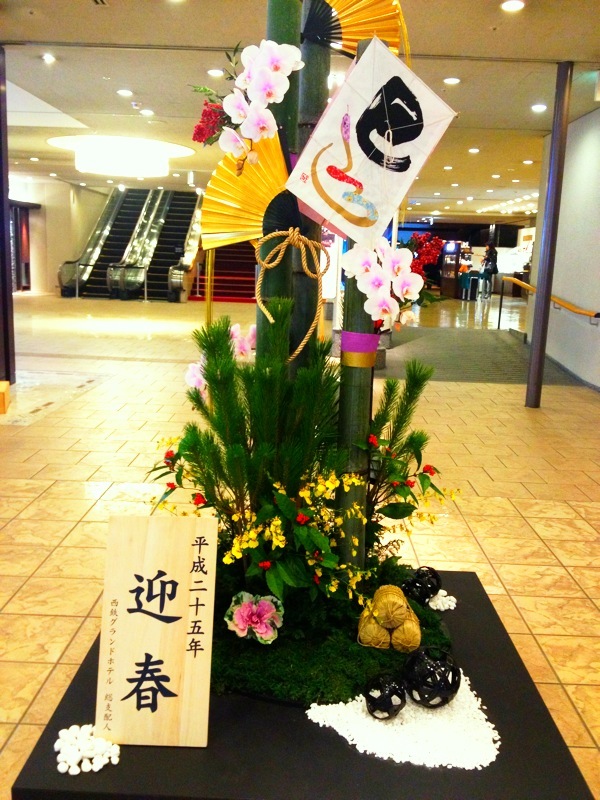Kadomatsu (門松, literally “gate pine”) are traditional decorations of the Japanese New Year placed in pairs in front of buildings, and to a lesser extent homes, to welcome ancestral spirits or kami of the harvest. They are put out immediately after Christmas, sometimes as early as the evening of the 25th, and remain traditionally until the 15th of January (Matsunouchi, 松の内), but only until the 7th in recent years.
Designs for kadomatsu can vary depending on region but are typically made of pine, bamboo, and sometimes umé tree sprigs which represent longevity, prosperity and steadfastness, respectively.
The fundamental function of the New Year ceremonies is to honor and receive the toshigami (deities of the new year), who bring a bountiful harvest for farmers and bestow the ancestors' blessing on everyone. After January 15th the kadomatsu and other New Year’s decorations are burned in bonfires at Shintō shrines to appease the gods and release them, an event known as Dontoyaki (どんと焼き) or Sagichō (左義長).
At the Nishitetsu Grand Hotel
At Daimyō Elementary School
In front of Mitsukoshi Department Store in Tenjin
At the Seahawk Hilton Hotel in Momochi
In front of a popular Japanese restaurant called Chikae






